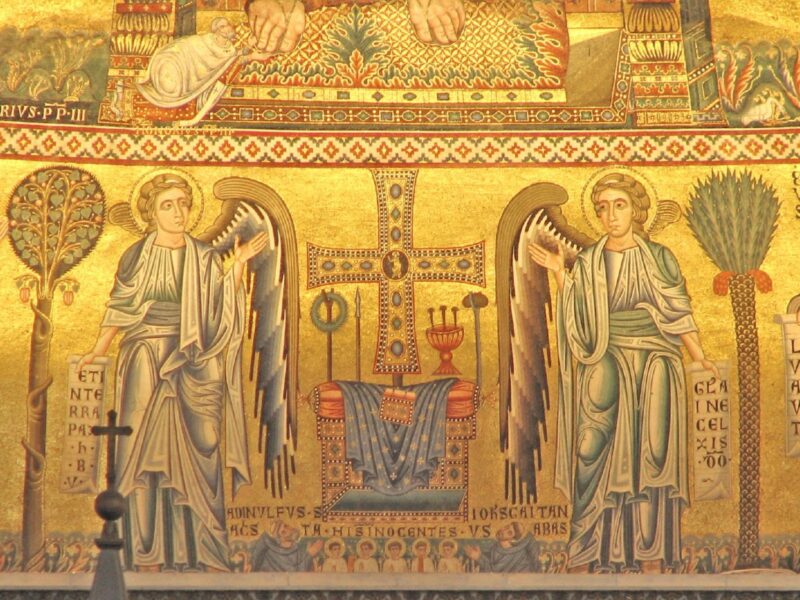
A Lethal Infection?
Thirteenth Sunday of the Year. Fr Richard Ounsworth show us how Jesus Christ, through his death and resurrection, is the source of all healing.
Every society is built upon symbols. In our own time, the symbols of the dollar and euro signs and the golden arches of McDonald’s seem to resonate particularly strongly, while in the Israel of Christ’s time it was the axis between the two poles of purity and death that the Jewish mind turned around. It is around this axis that today’s Gospel also turns.
This lengthy passage forms what scholars sometimes call a ‘Markan sandwich’: St Mark is particularly keen on putting one story inside another, as today the story of the women with the haemorrhage is the filling and the story of the raising of the official’s daughter the bread. The two are juxtaposed in order to help interpret one another. (Which is not to say it didn’t really happen like this – perhaps it was divine providence, and not St Mark, that made the sandwich…).
What the two stories have in common, over and above being illustrations of the divine power at work in Jesus, is that both the woman, having a flow of blood, and the girl, being dead, were ritually unclean. To touch or to be touched by either would render one impure, in need of a purifying ritual before one could return to day-to-day life. It is for the same reason that lepers, also being ritually impure, whether or not actually infectious, had to be kept apart. Impurity was itself, as it were, infectious.
In the same way sin was seen to be infectious. Whether it was some moral transgression – theft, adultery, murder or just a white lie – or a purely ritual ‘fault’ like menstruating (which of course the Jews knew full well is not a moral matter at all), these things brought defilement to the individual and to the temple, the dwelling place of God, which had to be cleansed ritually with sacrificial blood.
Yet Jesus does not concern himself with any ritual impurity he may have incurred. He feels the woman touch him, knows that his healing power has been drawn on, but is not concerned that he has contracted any defilement. He takes the corpse by the hand as he raises the little girl to life.
What are we to conclude? That he does not recognise the symbolic relationship between purity and death that the Jewish Law establishes? Certainly not! Not one jot or tittle is to pass away from the Law until all is accomplished. When, earlier in St Mark’s Gospel, Jesus cleansed the leper (Mark 1.40-45), notice that he says to him not ‘be healed’ but ‘be cleansed’ – and then he sends him off to make the sacrifices laid down by the Law.
No, Jesus does not reject the distinctions between clean and unclean established by the Law. Rather, those distinctions help us to understand him. Jesus does not get infected by impurity because he himself is infectious. That is to say, his power to bring purity whether there is uncleanness is more powerful than the infectious power of sickness and even death. This symbolism of the infectiousness of uncleanness helps us to see how Jesus’s more powerful infectiousness symbolises his power to bring wholeness where there is sickness, to bring forgiveness where there is sin, to bring life where there is death.
Jesus’s power to do these things is the power of perfect love – the love that moves him to bring his healing and life-giving power to bear. It is this same love that will move him to mount the wood of the Cross and pour out his blood to cleanse the entire world of sin. Jesus Christ is the true temple, and like the earthly temple that symbolised him, that infectious power of sin did in a certain way infect him. It killed him. It tore down the temple of his body.
Yet the Resurrection manifests the stronger infectiousness of life and love. These things cannot be destroyed by death or hate, but will always ultimately overcome them, by the power of God which is love. We Christians are those who have been infected by the love of God shown forth in Christ, and are willing to die of that infection because we know that love is stronger than death.



